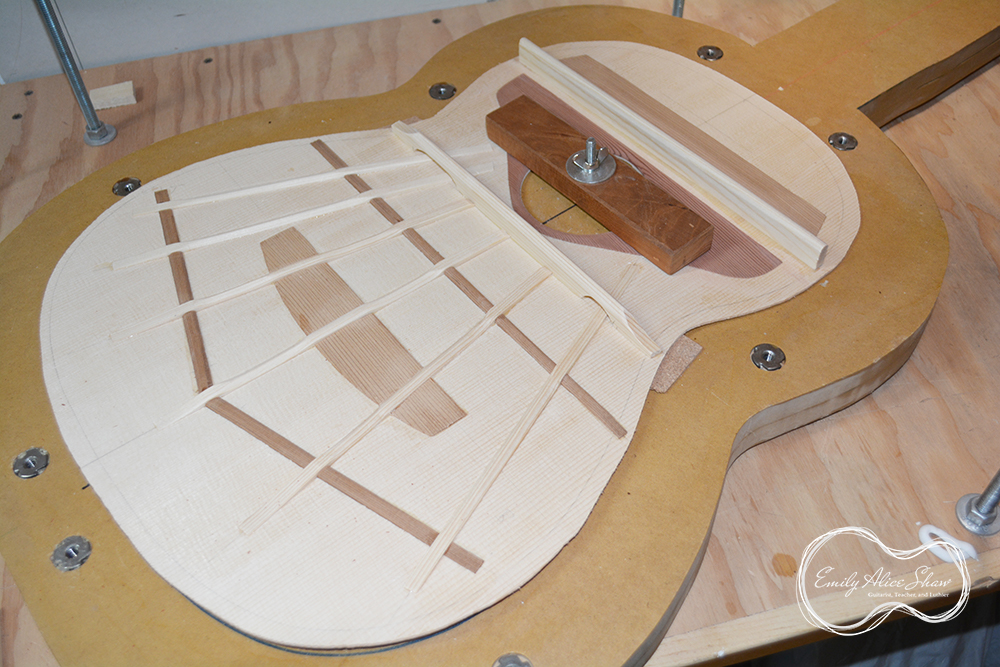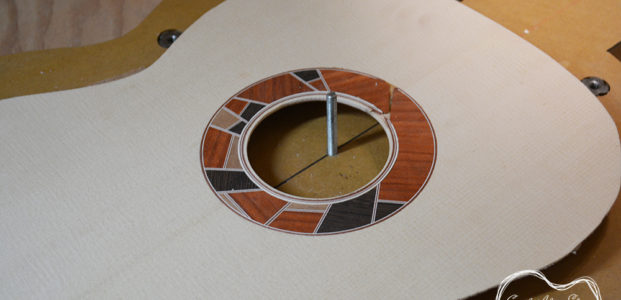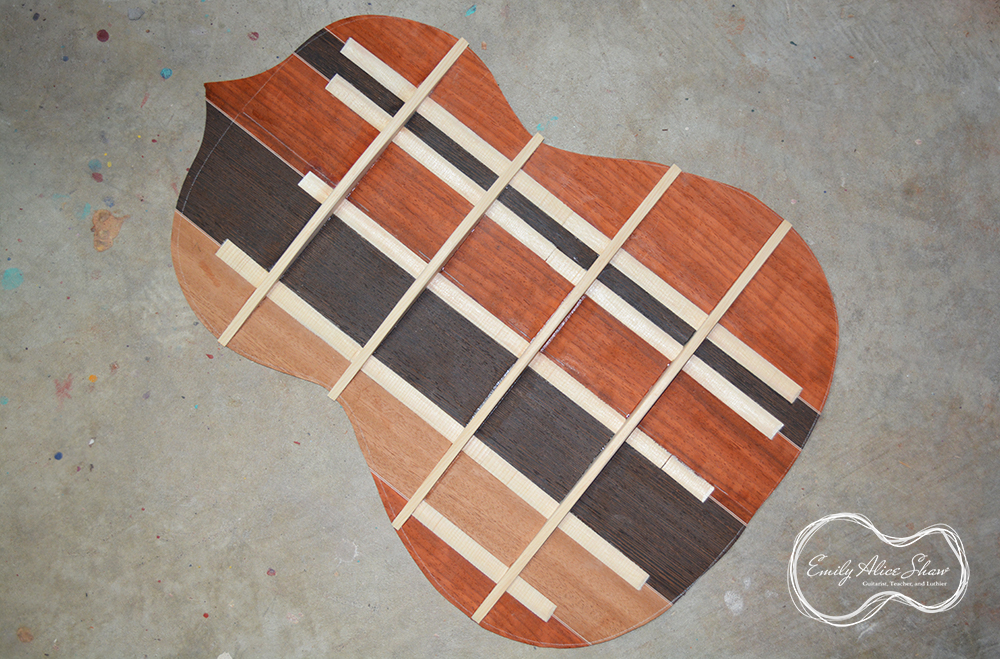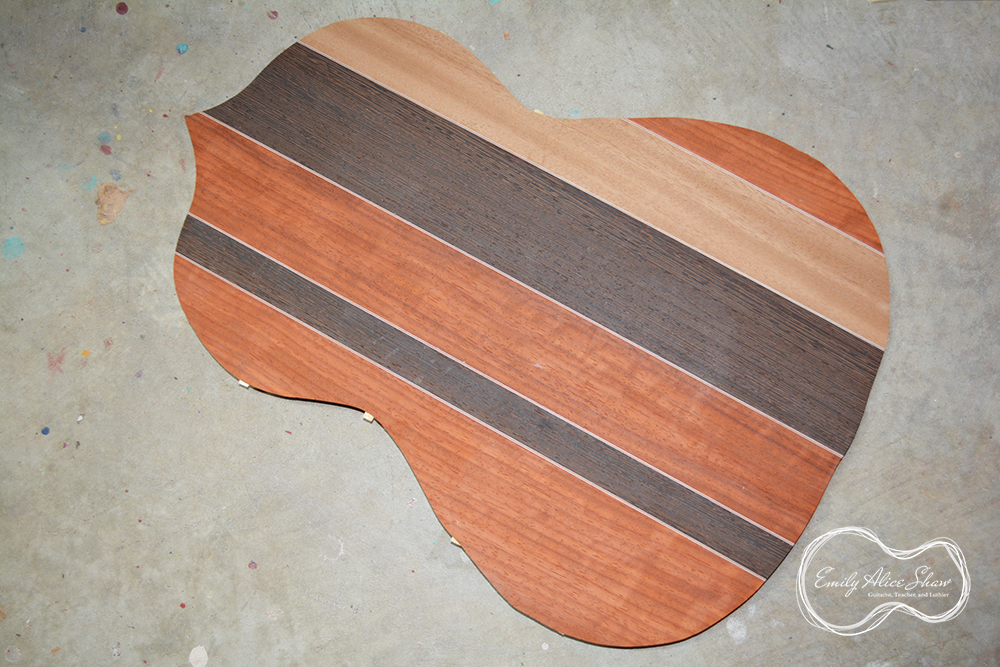It is hard to believe that a whole year flew by since my last post on this blog. So many changes and projects have filled that time, and maybe I’ll be able to write about some of them here and in future posts. But I’m still here and I’m still making lots of noise and dust.
In that last post I talked about projects coming up for the year (2021)—releasing a CD (yep, did that—you can buy it here or listen to it wherever you stream music), publishing a ukulele building course (nope, that didn’t happen, but it might in the future!), repairing a Brazilian guitar (yep, did that; there are no pictures), building a romantic guitar (nope) and building a steel string guitar (nope). So I did some of the things, which is pretty standard for me, and probably for most of us.
But 2021 was always going to be a year of unknowns. Craig and I had our first daughter—a wonderful little girl who is somehow already 9 months old and full of smiles, my stubborn streak and way too much charm. I thought that I could have a baby and then keep on going with everything that I had been and more. I think that the known unknown of having a tiny human to care for lead me into a panic that had me committing to as many things that might ground me in my pre-baby normality. Turns out I am human, so doing everything didn’t happen, and I am starting to learn to say no to things and to cut back so that I can focus on what matters most to me.
I started by cutting back the size of my teaching studio, so I am no longer taking on new students and I am only teaching a few evenings a week. Then, on New Years Eve I decided to delete my social media accounts for the year (except YouTube—you can still find my videos there), so I am no longer feeling pressured to share content or, let’s be real, waste time scrolling through addictive meaningless content feeds. This seems like a rash decision for an artist, but I am convinced that there is a way to exist as a musician without the so-called “help” of Facebook, Instagram, or whatever other platform one might choose to inhabit. I’m not sure what that might look like, but I am going to take this year to think about it and work it out. I’m starting by putting some focus back on my website, blog and newsletter. That is already a lot for me to handle, so I feel like I would be spreading myself thin if I were to try to manage social media accounts as well. I’m not sure where else I might cut back, but I am interested in exploring the “no” a bit more this year.
I am going to continue building. Making dust is just way too much fun, and I have been making a lot of dust!
I am currently working on a classical guitar with a spruce top and multi-piece Wenge-Padauk-Mahogany back and sides. This guitar has a fairly modern aesthetic and I am very excited about the design. It is coming together slowly, but should be finished in the first few months of this year. After that I have a second guitar to build, which will take me to the end of 2022. I have a few repairs lined up as well, so lots of fun for me in the workshop.
Ok, onto the Stripes and angles that the title promised.
The Spruce-Wenge-Mahogany-Padauk guitar (let’s call it the SWMP guitar) is currently in pieces, so here is a bit of chatter about those bits.
The soundboard is inlayed with an angular rosette made from leftover bits from the back of the guitar. I like to keep the colours of a guitar cohesive, and using the same pieces of wood helps. This guitar will also have a headpiece to match the back and rosette. I have described the rosette inlay process before, and this one was nothing new really, although I did try out my new Dremel guides from Lee Valley for routing a circle, and that made the job considerably faster.

The soundboard is braced in a new pattern (for me) that uses asymmetrical fan bracing (with more bracing on the treble side to, in theory, help to create clear treble sounds) with some cross braces to help keep the soundboard in an even dome (similar to what lattice bracing does). I used an open harmonic bar below the soundboard because I liked the way that has worked on a few previous instruments. If nothing else, I think it looks pretty.

The back is multi-piece, as previously described, and asymmetrical. I love the way this back looks, but it was a pain to work with, especially when thinning. My next big tool purchase/build will be a thickness sander because I am ready to pass that task off to machinery for the most part (if anyone reading this has suggestions as to what to buy or make, I’m all ears!). Multiple pieces of wood means multiple grain directions and multiple species of wood means multiple densities and plane-ability… so I used my orbital sander for a lot of the work, and that is very noisy and produces a lot of dust, even when sanding over my down-draft table. Thank goodness for dust masks!
I will not promise a date for the next blog post, but there will be another before this guitar is finished. The next step for me is bending sides, and then I’ll be onto assembly!
As always, thanks for reading! Happy New Year and all the best for 2022.




Hi Emily, I am really enjoying reading your blog. I have just started building my own guitars, and have built 3 now, but all from stewmac kits. I am just getting ready to build my first classical based on the Bogdanovich book, flame maple sides and a cedar top, purchased from Wood to Works. I was wondering if you could let me know of any other places you source your wood from? I’m having a little difficulty finding places, especially for things like the veneers for the sides. Any help would be appreciated! Thank you!
Hi Chris! Great to hear that you are getting deeper into guitar building. Sorry for the delayed response. I have purchased from Wood To Works as well. Other Canadian sources include: Timeless Instruments (SK), EdCo Fine Woods (BC) and A&M Specialty Woods (Cambridge ON). Other specialty wood stores often sell guitar wood, or wood that can be milled to guitar specs, so I have bought wood at a variety of these sorts of places, including KJP Hardwoods in Ottawa. These places often carry veneers as well as wood milled specifically for guitars. I’ve also used wood from my parents’ backyard, and bits and pieces of wood that people have given me over the years. I have also often ordered from LMII in the states, and once or twice from StewMac, also in the states. All the best!